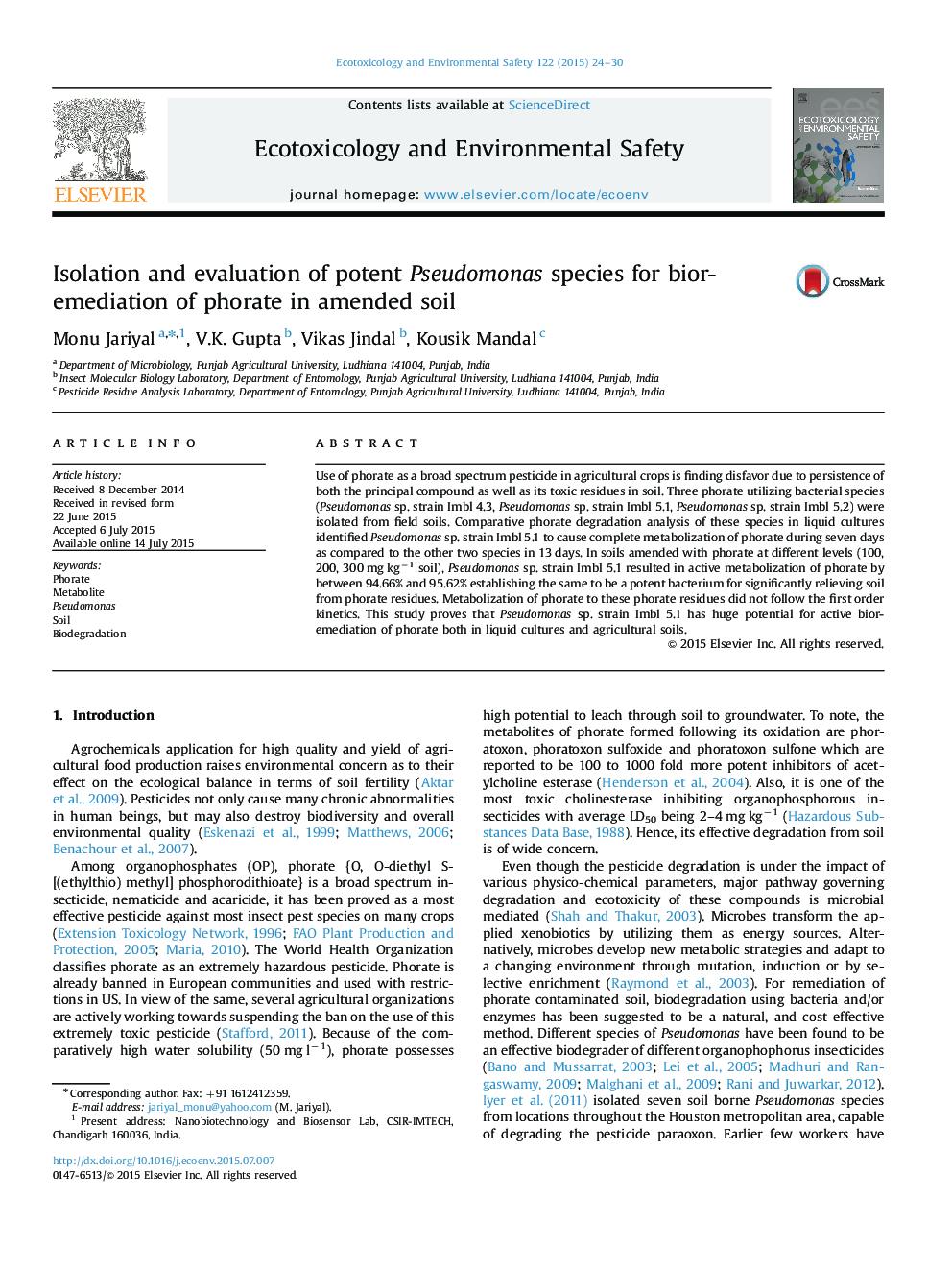| Article ID | Journal | Published Year | Pages | File Type |
|---|---|---|---|---|
| 4419563 | Ecotoxicology and Environmental Safety | 2015 | 7 Pages |
•Pseudomonas sp. strain imbl 5.1 has a great role in the bioremediation of phorate.•Phorate metabolized by between 94.66% and 95.62% @100, 200, 300 mg kg−1.•Metabolites were found as sulfone > sulfoxide.•Total phorate residues were not found to follow the first order kinetics.•Persistence of phorate was found to be more in unamended soils.
Use of phorate as a broad spectrum pesticide in agricultural crops is finding disfavor due to persistence of both the principal compound as well as its toxic residues in soil. Three phorate utilizing bacterial species (Pseudomonas sp. strain Imbl 4.3, Pseudomonas sp. strain Imbl 5.1, Pseudomonas sp. strain Imbl 5.2) were isolated from field soils. Comparative phorate degradation analysis of these species in liquid cultures identified Pseudomonas sp. strain Imbl 5.1 to cause complete metabolization of phorate during seven days as compared to the other two species in 13 days. In soils amended with phorate at different levels (100, 200, 300 mg kg−1 soil), Pseudomonas sp. strain Imbl 5.1 resulted in active metabolization of phorate by between 94.66% and 95.62% establishing the same to be a potent bacterium for significantly relieving soil from phorate residues. Metabolization of phorate to these phorate residues did not follow the first order kinetics. This study proves that Pseudomonas sp. strain Imbl 5.1 has huge potential for active bioremediation of phorate both in liquid cultures and agricultural soils.
